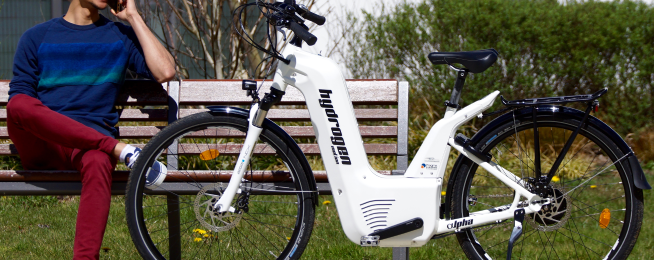Only a few years ago fuel-cell bikes powered by hydrogen seemed like something out of science fiction.
No longer. They are here, and they are promising some major advantages over traditional e-bikes.
Proponents claim they can solve the limited range problem of e-bikes, and solve the slow battery recharge problem.
The French Pragma Alpha fuel cell bike first went into production six years ago, but a recent breakthrough in hydrogen storage capacity has been a game-changer.
Combined within the bike are a lithium-ion battery and a fuel cell, the latter of which is fuelled by a hydrogen gas cylinder.
Now, Pragma has swapped in a 300-bar carbon composite gas cylinder, increasing the electrically-assisted pedalling range to a claimed 150 kilometres.
By contrast the average battery-electric e-bike has a range of around 50 kilometres.
Although e-bikes can go further with bigger batteries, bigger batteries take longer to recharge — at least two hours.
But with a fuel cell, there is no waiting around as the rider can simply replace a reusable hydrogen cylinder in a couple of minutes. It would even be possible for spare cylinders to be carried on the bike, providing huge range.
Pragma sees this advantage as being particularly attractive to fleet operators such as public utility services, corporate staff mobility, local delivery, tourist rental and bike share.
E-bikes, while increasingly used for fleet purposes, are off the road frequently for lengthy recharging periods.
A 200 strong fleet of the latest Alpha bikes were in use at the recent G7 World Summit in Biarritz, France.
Become our friend
Find out more about Bicycle Network and support us in making it easier for people to ride bikes.


